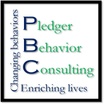Frequently Asked questions
What is ABA?
Applied Behavior Analysis (ABA)
–the science in which the principles of the analysis of behavior are applied systematically to improve socially significant behavior and experimentation is used to identify the variables responsible for behavior change. (Cooper, Heron, Heward, 2007)
Simply stated, ABA applies the universal principles of behavior to change behaviors in a way that is socially significant for the individuals and families we serve. We use interaction, observation, and functional analysis to determine how each individual learns and interacts with his or her environment. This information is then used to determine how best to work with these individuals to affect positive and significant change.
Applied Behavior Analysis uses data collection, analysis, and environmental modification to measure an individual's progress. Treatment procedures rely heavily on data analysis, and can be quickly modified if the data suggests that the plan is not effective.
These treatment procedures can be utilized in homes, schools, during community outings, and across a vast array of other settings. Our goal is that the strategies we teach will be easily adaptable to the individuals' specific needs.
What is Experimentation?
In ABA, we manipulate variables in a person’s environment to either prevent or encourage a behavior (Antecedent intervention) or increase or decrease the likelihood that it will happen in the future, under similar circumstances (Consequence intervention).

Site Content
What is Behavior?
What is Behavior?
What is Behavior?

A behavior is something that an organism does:
–Is outside the body
–Affects the environment
–Is easily observable without specialized instruments
–Can be measured
(Dead person test–If a dead person can do it, it’s probably not behavior!)
ABCs of Behavior?
What is Behavior?
What is Behavior?

One model commonly used in analyzing behavior is the ABC model:
–A: Antecedent
–B: Behavior
–C: Consequence
What is a Consequence?
What are the Basic Functions?
What are the Basic Functions?

Reinforcement and Punishment
Reinforcement is usually a desired stimulus. It increases the likelihood that the behavior will occur again.
Punishment is usually an aversive, or undesired, stimulus. It decreases the likelihood that the behavior will occur again.
What are the Basic Functions?
What are the Basic Functions?
What are the Basic Functions?

Consequences help to maintain behavior. When desired consequences are repeatedly offered following a behavior, that behavior is strengthened.
This then becomes the function of the behavior, or why the person is using that particular behavior.
The basic functions are:
1. Attention,
2. Escape,
3. Non-Social(self-stimulation),
4. Physical,
5. Tangible
A behavior may serve more than one function within and across individuals, interventions that may work to treat one person may not work to treat another.
This website uses cookies.
We use cookies to analyze website traffic and optimize your website experience. By accepting our use of cookies, your data will be aggregated with all other user data.
